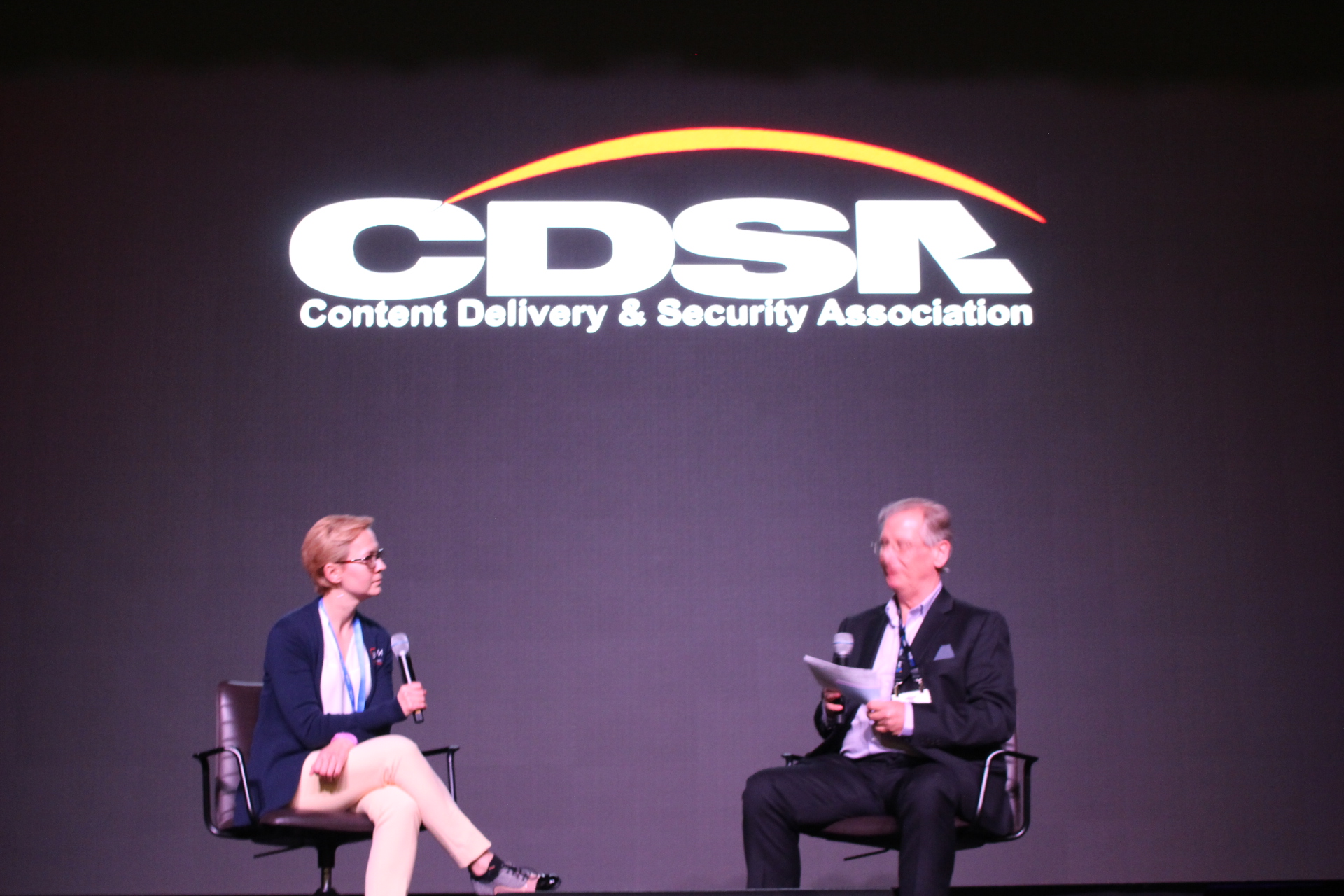Anti-piracy is about smart business logic, backed by team play and tight infrastructure, and media and entertainment companies can defeat pirates and increase their opportunities by making well-informed security decisions, according to Piracy Monitor and digital rights management (DRM) solution provider EZDRM.
Sports leagues and broadcasters build their businesses around territorial franchises to best attract advertisers and sponsors that are relevant to their audiences. But events play out so quickly that instances of piracy must be detected, pinpointed and stopped in minutes.
Distributors, meanwhile, build demand through exclusivity. Movie release windows are engineered for maximum return on investment. Understanding this and responding appropriately makes a big difference.
“The premise of this conversation is really about protecting content and rights over time and space,” Steve Hawley, managing director of Piracy Monitor, said April 23 at the Anti-Piracy and Content Protection Summit in Las Vegas, during the session “Recovering Revenue From Piracy, Across Time and Space.”
“So what does that mean? Time is about things like release windows. Space is about content being where it’s supposed to be and not being where it’s not supposed to be,” he noted, before introducing Olga Kornienko, COO and co-founder of EZDRM, who he said collaborated on research to uncover just how much money companies lose to piracy.
One of the things that EZDRM found that was “completely shocking is that companies say that, on average, they lose about 20 percent of their revenue to piracy,” according to Kornienko. It’s “more for some, less for others but, pause for a second and think about your company’s revenue and what 20 percent of it actually amounts to,” she said. There are “a lot of various costs” involved, she said, explaining: “Part of it is lost revenue because you’re not retaining customers but part of it is also [the] cost of things like you’re actually hosting the content but somebody is using it.”
In addition, there “could be opportunities you’re missing,” Hawley pointed out. “And, I think what we also need to recognize [is that] DRM and content protection technologies are really also about enabling opportunity and protecting opportunity,” he said, telling her it came as a “surprise to me from your research that as high a percentage still watches live broadcasts.”
Lost Eyeballs
One of the other things that EZDRM found that people surveyed said was they weren’t concerned as much about live content as they were about video on demand, Kornienko said.
But an issue that did come up in the survey was that, in the middle of a live sports event, somebody may start to “pirate your stream and somebody as a consumer finds it elsewhere, cheaper, then they switch to that stream,” she said.
She warned companies: “Until you get involved with takedown and watermarking and all the other aspects that should be part of an overall security solution, you’ve really lost those eyeballs. You’ve lost those subscribers. And the question is: Are they going to come back or are they going to look at the pirated service that is offering the live stream, plus the Disney content plus some shows they want to watch and they decide that they like it better? And until that service is taken down, they don’t have a reason to come back to your live content anymore.”
Therefore, it’s “incumbent on the video provider not only to have good technology but make good business decisions about making the content available at the right price point and the right bundle at the right time and so forth,” according to Hawley.

Bummed Out by Being Blocked Out
A lot of the people surveyed said they and their companies supported geo-blocking that prevents content from being viewed in certain markets, Kornienko said. They supported various other similar types of restrictions, she said.
However, the “funny part of it” was that several of those polled said they couldn’t understand why they couldn’t watch their content in the area they wanted to watch it in, she said, adding: “I think a huge part of dealing with piracy is figuring out the human logic behind why we pirate.”
That is why an “approach to piracy should be holistic” and take into consideration why people pirate content, she said, adding it’s important to come up with solutions that “make piracy less attractive.”
What is also important, “at the end of the day,” is that “we’re all in the business of making content [and] making money, so we can’t ignore the rights of content owners just to appease the consumers – but we also can’t really ignore the desires of the consumers to appease the rights owners” either, she said, adding: “There has to be some sort of a happy middle ground.”
The Need for Watermarking
Kornienko and Hawley also stressed the importance of watermarking, which he noted “will help you determine what device” pirated content “came from, when it came from there,” and maybe even provide an IP address of the pirate.
DRM is “like a security lock on a front door,” Kornienko said. “You put in a lock and you try to prevent people from walking in, and only the people that you want to come visit you can come visit you,” she noted.
On the other hand, “watermarking is more of a video camera or like the Ring doorbell – [or] whatever technology you prefer to use – that monitors who is actually going in,” she pointed out. It “can’t stop a person from breaking in at the physical moment they’re trying to break in,” she conceded. It is, however, “absolutely capable of saying, wait, ‘no, we saw that this person just tried to break in and we can send this picture to the police and they can go and arrest them because they have the picture of who broke in and they can see what’s going on.’”
She added that the two technologies “should work smoothly [together] to provide an overall solution, a holistic solution to security or a piracy problem.”
Education’s Also a Key
But education also plays an important role, according to Kornienko, who pointed out: “I know a lot of people, especially [the] older generation, who do not know that there are commercial piracy services…. Part of it has to be education saying that … you have to understand that if you have access to every single sport and content from Netflix and Hulu and Disney and Sony on one service, it is really not a legitimate service.”
She had that kind of conversation several times, “trying to explain to people that it doesn’t work that way,” she recalled, adding: “There’s no way they can offer this at $10, $20, $30 a month. It’s just not possible. And the people looking at me just don’t understand that that is actually a reality. They think that because they’re paying for it, it’s okay. And I think that’s also a chunk of information that we have to keep in mind in order to figure out what we can do to combat piracy.”
To view the presentation, click here.
The 2022 Anti-Piracy and Content Protection Summit was presented by Richey May Technology Solutions, with sponsorship by Convergent Risks, NAGRA, Verimatix, BuyDRM, EZDRM and Vision Media. Produced by MESA, in association with the Content Delivery and Security Association (CDSA), the media partner for the show was Piracy Monitor.
To learn more about CDSA visit: https://CDSAonline.org
To find out more about upcoming MESA events or to get involved as a sponsor please contact Evie Silvers at [email protected].

